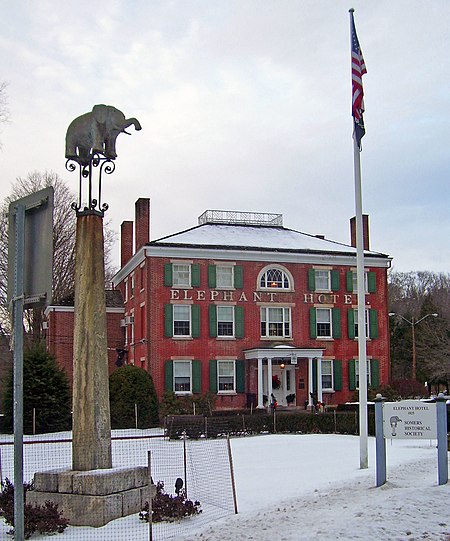The former West Somers Methodist Episcopal Church, also known as Tomahawk Chapel, is located on Tomahawk Street (part of New York State Route 118) in the town of Somers, New York, United States. It is a small wooden building in the Greek Revival architectural style built in the 1830s. Also on its lot is the cemetery where many of the early members were buried. In 2011 the church, cemetery and the stone wall that surrounds them were listed on the National Register of Historic Places.
At the time of the church's construction, West Somers was a thriving agricultural community. Burials had begun in the cemetery almost a decade earlier; most of the area's congregants attended the established Mount Zion Methodist Church some distance away. One of West Somers's more prominent residents built the church so his neighbors would not always have to travel so far; it was so small that circus pioneer Hachaliah Bailey, also a Somers resident, likened it to a tiger's cage.Throughout the rest of the 19th century the church was a cornerstone of the West Somers community, with itinerant ministers leading services in the absence of a pastor (according to the United Methodist Church, successor to the Methodist Episcopal Church, the church was never a recognized congregation within the larger denomination). Its Sunday school classes were for a long time the only educational opportunity available to area children. Members continued to be buried in the cemetery; more than half lived to be over 70, an unusually high number for that region and era.Attendance and involvement declined in the early 20th century as West Somers felt the effects of suburbanization and the taking of large tracts of local land to create the reservoirs of the New York City water supply system. By the 1950s the church building had suffered such severe decline and neglect that its porch columns had to be replaced. Further restoration and renovation, including moving the church from its original site in the early 21st century, preceded the building's listing on the National Register.









